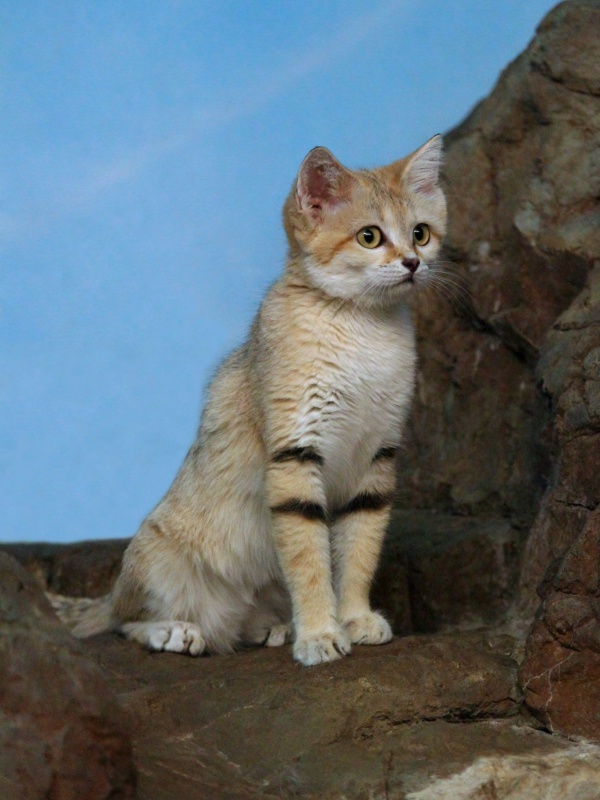Facts About Sand cat
The sand cat, also known as the sand dune cat, is a small wild feline that thrives in sandy and stony deserts, often far from water sources. With its sandy to light grey fur, it blends seamlessly into its desert surroundings. These cats typically measure between 39 and 52 cm in body length, with tails extending 23 to 31 cm. They have distinctive 5 to 7 cm long ears that help them detect prey moving underground. Additionally, their foot soles are covered in long hair to protect against the extreme desert temperatures.
First discovered in the Algerian Sahara in 1858, sand cats have been spotted in various regions across North Africa, Southwest Asia, and Central Asia. Due to their wide distribution, they are listed as Least Concern on the IUCN Red List. These nocturnal creatures rest in underground dens during the day and hunt at night. Their diet mainly consists of small rodents and birds, and they are renowned among the Tuareg people for their ability to efficiently kill venomous snakes.
The classification of the sand cat has been debated, with several subspecies proposed and later consolidated. Genetically, the sand cat diverged from other Felis species between 4.44 and 2.16 million years ago. Fossil remains found in Morocco suggest that the species existed in the region during the Upper Pleistocene.
Sand cats inhabit deserts across North Africa, Southwest Asia, and Central Asia. They prefer flat or slightly undulating terrains with sparse vegetation. However, they face threats such as habitat degradation, loss of sand dunes, uncontrolled hunting, and human persecution. Conservation efforts are underway, including reintroduction projects and captive breeding programs, to ensure their survival.
In captivity, sand cats are prone to respiratory diseases and infections. The captive population is managed through initiatives like the European Endangered Species Programme, which aims to maintain genetic diversity. Despite the challenges, successful breeding programs in zoos, including in vitro fertilization and embryo transfer procedures, have achieved positive results.

 Kazakhstan
Kazakhstan